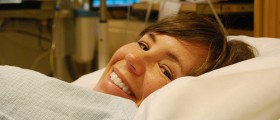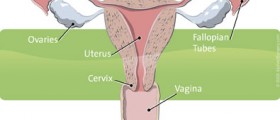
Almost every woman in the world fears of suffering from uterine prolapse. Basically most of women know what prolapsed uterus is, but those who are not familiar with the term should know that it is a certain condition that affects only women and women diagnosed with it suffer from a uterus which sags or slips out of the normal position.
What is Uterine Prolapse?
A lot of people are not aware that prolapse is actually a vaginal hernia and that it occurs when the walls of vagina become loose. In most cases of uterine prolapse the uterus will slip so far that it will drop partway into the vagina. When that happens, a lump or bulge will appear. This particular case of vaginal prolapse is known as incomplete prolapse and it is not the most severe one. The most serious case is a complete prolapse. In this case the uterus slips so far that parts of the tissue actually drop out of the vagina.
When symptoms of uterine prolapse are present, women should know that they will notice any obvious signs if they are suffering from a mild case of uterine prolapse. Symptoms are a lot more common when the uterus slips further down. When that happens, a woman will experience pressure on other pelvic organs like bladder or bowel and will notice certain symptoms. Some of the most commonly seen symptoms of uterine prolapse are the sensation of heaviness or pressure in the pelvis, pain which can be felt in the pelvis, abdomen and even lower back, a protrusion of tissue from the opening vagina, bladder infections which tend to happen to a person several times, discharge from the vagina which is not of the right color or amount and constipation.
Women may also experience pain during the sexual intercourse and even problems with urination such as urinary frequency and involuntary loss of urine.Women should also be aware of the fact that the symptoms will only get worse by standing or walking for too long. The main reason why that is so, is because excessive amount of pressure is placed on the pelvic muscles. Pelvic muscles play an essential part in the process of holding the uterus in its place. There are some reasons and factors which contribute to the weakening of the pelvic muscles such as loss of muscle tone due to aging or injury when giving birth either to lots of babies or babies who weigh more than 9 pounds. There are some other factors which contribute to the weakening of pelvic muscles such as obesity, chronic coughing and chronic constipation.
What Causes Uterine Prolapse?
Women need to know that there are a lot of probable causes of uterine prolapse but some of these causes occur a lot more often than others. According to the experts, the most common causes are childbirth, loss of hormones during menopause, too much weight and certain chronic illnesses. The ailments which are known to cause a lot of pressure inside the abdomen like chronic lung disease for instance is known to be the cause of uterine prolapse. Experts also claim that women who had difficult deliveries are a lot more likely to suffer from uterine prolapse than women who had no babies. An interesting thing is that even women who delivered with a caesarean section can also end up suffering from uterine prolapse. The main reason why that is so, is because of the pregnancy hormones which make the tissues able to stretch more than they normally should. Apart from these cases, women should know that aging also contributes to the weakening of the muscles.Who gets uterine prolapse?
Women should know that this condition is considered to be fairly common. According to the data, there are more than 600,000 women at this moment who suffer from uterine prolapse and the third of this number requires immediate medical treatment. There was a certain study done in 2004 in the health camps which were located in ten districts of Nepal. Among all the women who participated, the youngest were 16 years old and the oldest 80. The doctors claim that this condition mainly affects women who are aged between 25 and 50 years of age. Out of 41 women who participated, 86% of them were married before they reached the age of 19. Only 5% of these women did not carry big and heavy loads within 45 days of child birth.
Women should also be aware that there is no chance of actually preventing uterine prolapse but there are ways risk can be reduced. Making sure that the body weight is in the boundaries of normal is very important. Regular exercise, a healthy diet, quitting smoking, using proper lifting techniques and considering estrogen replacement therapy after the menopause are the best ways a woman can reduce the risks of uterine prolapse.

















Your thoughts on this
Loading...